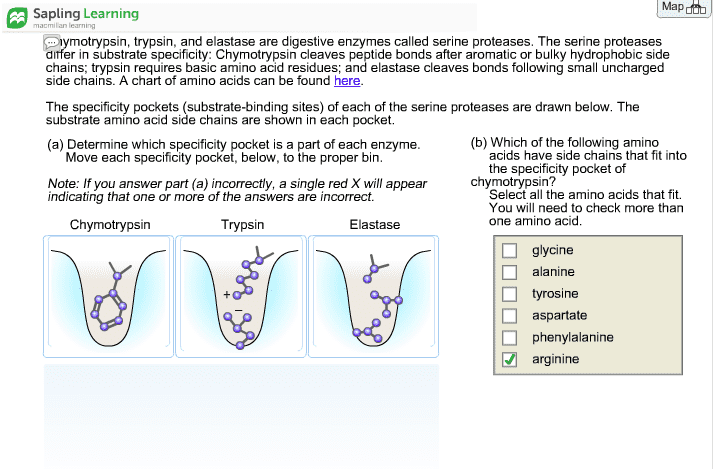MBB 222 Lecture Notes - Lecture 14: Catalytic Triad, Tetrahedral Carbonyl Addition Compound, Elastase
Document Summary
Other serine proteases share the catalytic triad and reaction mechanism but have different substrate specificities. The s1 binding pocket of chymotrypsin accommodates a large hydrophobic side r3 chain. S1 binding pockets of trypsin and elastase accommodate long positively charged side chains (lys, arg) and small side chains (ala, ser), respectively. These specificities are due to the residues surrounding the s1 binding pocket. Trypsin and elastase are homologs of chymotrypsin - are ~40% identical in their amino acid sequences and have similar proteins folds. Perfecting an enzyme that can hydrolyze a peptide bond under physiological conditions. Chymotrypsin, trypsin, elastase and thrombin (involved in the blood- clotting catalytic cascade) belong to the same family of serine proteases, having all descended from a common ancestor by gene duplication and mutation. Subtilisin is not a sequence or structural homolog of the chymotrypsin family but shares the catalytic triad and reaction mechanism.


